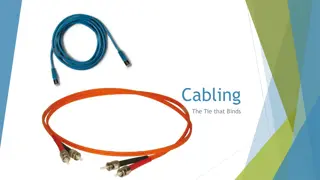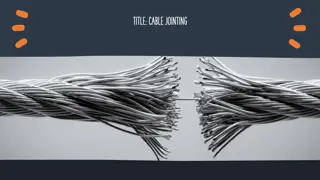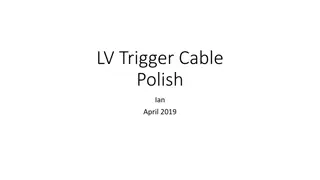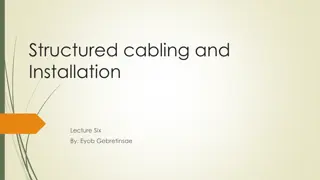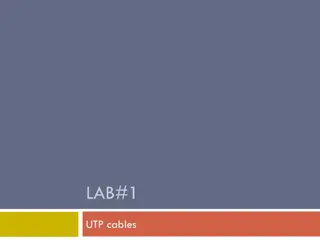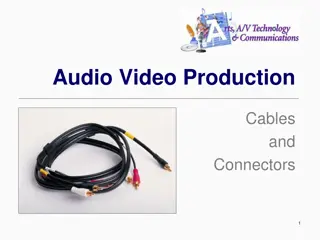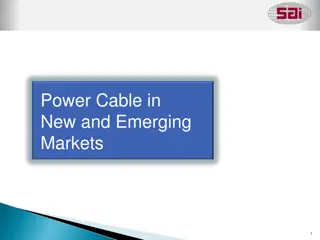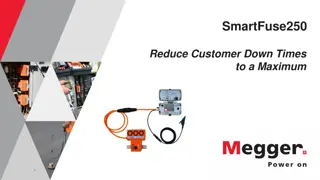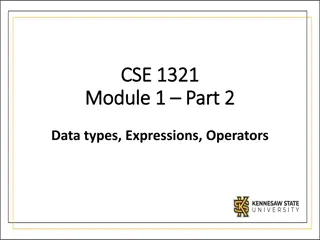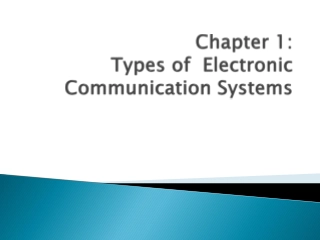What are the different types of cable lugs?
Explore the various types of cable lugs used in electrical installations. From copper and aluminum lugs to ring, fork, and tubular types, this guide provides a comprehensive overview of the different cable lugs, their applications, and how to choose
- Copper Cable Lug
- cable lugs
- bimettalic lugs
- aluminium lugs
- ring type lugs
- fork type lugs
- insulated cable lugs
- copper lugs
- copper tubular lugs
Download Presentation

Please find below an Image/Link to download the presentation.
The content on the website is provided AS IS for your information and personal use only. It may not be sold, licensed, or shared on other websites without obtaining consent from the author. Download presentation by click this link. If you encounter any issues during the download, it is possible that the publisher has removed the file from their server.
E N D
Presentation Transcript
What are the different types of cable lugs? Visit Our Website
Introduction to Cable Lugs Cable lugs are vital components in electrical systems, providing a secure connection between cables and equipment. They play a crucial role in ensuring electrical safety, reliability, and efficiency. The choice of cable lug depends on various factors such as the type of cable, the environment in which the cable operates, and the specific application requirements. In this article, we will explore the different types of cable lugs, their unique characteristics, and their applications. Visit Our Website
Copper Lugs Copper lugs are among the most commonly used types of cable lugs, primarily due to their excellent electrical conductivity and durability. Copper, being a highly conductive material, ensures minimal resistance and optimal power transfer between the cable and the equipment. Copper lugs are widely used in both residential and industrial applications, particularly in power distribution systems. Copper Tubular Lugs: These are the most common subtype of copper lugs, featuring a tubular design that allows for easy crimping. Copper tubular lugs are preferred in power distribution networks where high current-carrying capacity is required. They offer a strong and reliable connection, minimizing the risk of overheating. Visit Our Website
Aluminium lugs Aluminium lugs are specifically designed for use with aluminum cables. While aluminum has lower conductivity compared to copper, it is significantly lighter and less expensive, making it a popular choice in large-scale industrial and power distribution applications. Bimetallic Lugs: Similar to bimetallic lugs, these lugs are used when an aluminum cable needs to be connected to a copper terminal. They prevent galvanic corrosion by ensuring that only compatible metals come into contact. Visit Our Website
Ring type lugs Ring type lugs are characterized by a ring-shaped terminal end that can be securely fastened to a connection point using a bolt or screw. This design ensures a strong and stable connection, making ring type lugs ideal for applications where reliability is paramount. Applications: - Automotive Industry: Ring type lugs are commonly used in automotive electrical systems to connect cables to battery terminals and other components. Their secure connection minimizes the risk of disconnection due to vibrations or movement. Electrical Panels: In electrical panels and switchgear, ring type lugs are used to connect cables to busbars and other terminals, ensuring a stable and safe connection. Industrial Machinery: Ring type lugs are also used in industrial machinery where reliable electrical connections are essential for the safe operation of the equipment. Visit Our Website
Fork type Lugs Fork type lugs, also known as spade lugs, have a forked terminal end that allows for quick and easy connections. The forked design enables the lug to be slipped under a screw or bolt without the need to remove the fastener completely, making them ideal for applications where frequent connections and disconnections are required. Applications:- Control Panels: Fork type lugs are often used in control panels where quick and easy connections are necessary for maintenance and troubleshooting. Automotive Electrical Systems: In automotive applications, fork type lugs are used for connecting cables to terminals that may need to be frequently disconnected, such as in fuse boxes. Home Wiring: Fork type lugs are also used in residential wiring applications, particularly in situations where connections need to be easily accessible. Visit Our Website
Insulated Cable Lugs Insulated cable lugs feature a protective insulation layer that covers the terminal end of the lug, providing additional safety by reducing the risk of short circuits and electrical shocks. Insulated lugs are commonly used in environments where electrical safety is a primary concern. Advantages:- Enhanced Safety: The insulation layer reduces the risk of accidental short circuits and electrical shocks, ensuring safer installations. Protection Against Environmental Factors: Insulated lugs provide protection against moisture, dust, and other environmental factors that could compromise the integrity of the connection. Versatility: Available in various insulation materials and colors, insulated lugs can be used in a wide range of applications, from residential wiring to industrial automation. Visit Our Website
Copper Cable Lugs Copper cable lugs are specifically designed for use with copper cables. These lugs offer superior performance in both residential and industrial settings, ensuring reliable and efficient electrical connections. Applications:- Power Distribution: Copper cable lugs are extensively used in power distribution systems, where high current-carrying capacity and reliability are essential. Residential Wiring: In residential electrical systems, copper cable lugs are used to connect cables to switches, outlets, and circuit breakers, ensuring a secure and stable connection. Industrial Machinery: Copper cable lugs are also used in industrial machinery to connect power cables to motors, transformers, and other electrical equipment. Visit Our Website
Thank You Visit Our Website






